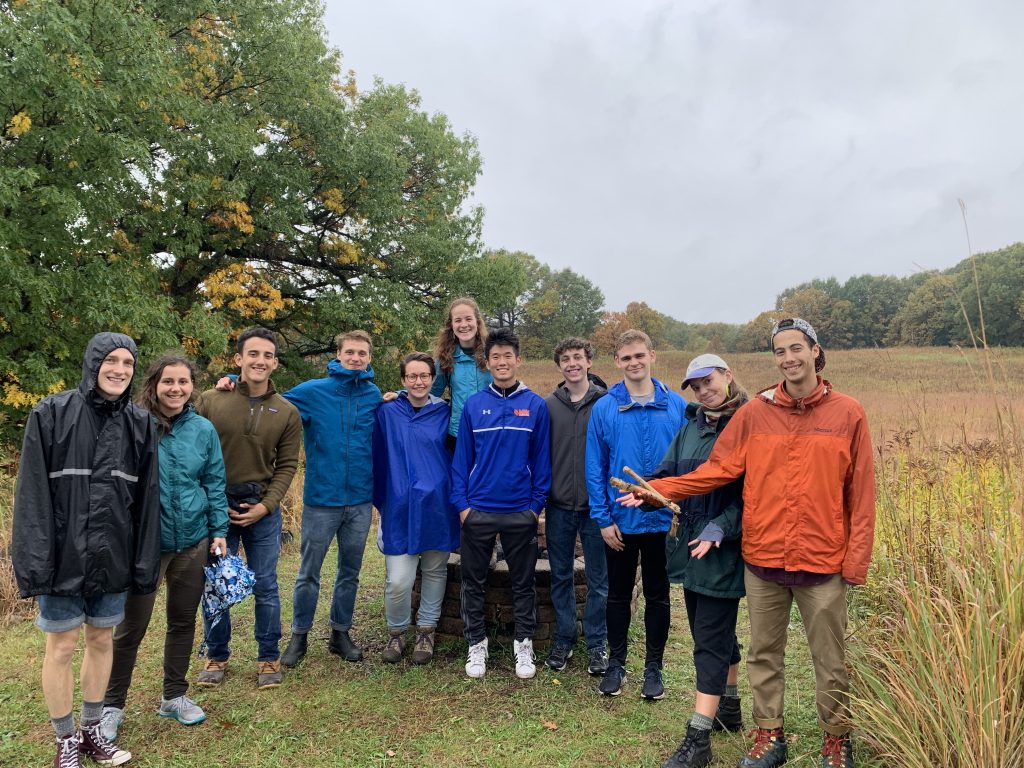Remote Sensing @ Macalester
Contact
Connie DeLage, Department CoordinatorCarnegie Hall, Room 104 651-696-6291
cdelage@macalester.edu
facebook instagram youtube linkedin

Remote sensing (RS) is the science of acquiring information about the Earth’s surface without actual contact with the object or area being analyzed. RS is increasingly utilized and relied upon to solve complex physical, biological and social issues affecting our interconnected world. Most biophysical applications of remote sensing use instruments carried on satellites. RS at Macalester focuses on the interpretation and application of data from space-borne imaging systems (eg: Landsat OLI, Landsat ETM, Quickbird, MODIS, AVHRR and SPOT).
The Geography Department currently offers an introductory course and an advanced course in Remote Sensing (RS). The computer labs in Carnegie 108 and 109 are equipped with the software Erdas Imagine, which is used for intro level courses. Students who are interested in working on independent project using Erdas Imagine should contact the Geography Department for permission to use the teaching labs. No other computers on campus are equipped with the software.
Interested in more information? Take a look at the course descriptions!

Learn more about the current course instructor!
One of the most important aspects of RS at Macalester is to have students conduct independent research of their own interest. A selected number of research projects conducted by students as part of the class or independently are detailed below:
SP 2021 (Module 4)
Prescribed burning and forest structure change in San Juan National Forest by Clair McHenry
Claire studied the effect of prescribed burns in forest structure in San Juan National Forest using Landsat derived-NDVI data, 2000-2018. Results show some reduction in NDVI in 2018, presumably from the implementation of prescribed burns. Future studies, potentially with finer sensors, would help clarify findings.
Depicting Sea Level Change in the Ganges River Delta, Bangladesha by Quinn Frankovsky
Quinn studied sea level change in the Ganges river delta in Bangladesh between 1990 and 2004 using Landsat derived-NDVI data. Results show some vegetation losses to water, mostly in urban areas and less vegetation losses to water in mangrove areas. More detailed temporal studies are needed to better understand sea level rise in the area.
Freeway Capping and the Urban Heat Island Effect: A Study of Boston’s Fitzgerald Kennedy Greenway by Tenley Smith
Tenley studied changes in heat island effect in Boston between 1997 and 2010 related to the construction of the Kennedy Greenway using Landsat thermal data. Results suggest a reduction in temperature between 1997 and 2010. This project contributes to understanding temperature dynamics in urban landscapes.
SP 2020 (Independent Study)
Forest health in the Yasuní National Park: using multispectral imagery to assess the effects of petroleum extraction, by Maggie Jaenicke
Maggie studied abroad in Ecuador until she had to return to campus due to Covid19. She completed her program independent study project using remote sensing. Her project “Forest Health in Yasuní National Park: Using Multispectral Imagery to Assess the Effects of Petroleum Extraction” evaluates changes in NDVI in different oil concessions over the past 20 years. Results suggest some changes in NDVI in two young concession blocks that follow the timeline of oil operations.
SP 2020 (GEOG 362)
Coastal Erosion in the Ipswich River Estuary: Utilizing a Tasseled Cap Transformation, by Malcolm Stuart
Malcolm studied soil erosion in the Ipswich River Estuary, MA, from 1988 to 2011 using the image transformation tasseled cap. Results confirm erosion, but show most erosion occurred between 2001-2006 in areas composed by sandy beaches.
Identifying and assessing the riparian zones around the Mississippi River, by Marley Kehew
Marly identified and spatially compared riparian zones in two different segments of the Mississippi River in Minnesota using Sentinel-2 images. She found more losses of riparian zones in a section of the river around Atkin than in a section around St. Cloud, but differences were minimal suggesting more research is needed.
FA 2019 (GEOG 362)
Characterizing ice dynamics of the Quelccaya ice cap in Southern Perú, by Alessandro Antúnez de Mayolo Mauceri
Alessandro studied ice dynamics of the Quelccaya Ice Cap in Peru using Landsat data. He found that Quelccaya has rapidly lost a significant amount of ice since 1985. This project helps to understand how ice caps and glaciers respond to anthropogenic climate change in the tropical Andes.
Modelling patterns of vegetation change in eastern Finnmark, Norway, by Henry Beimers
Henry studied changes in forest cover in Finnmark, Norway, using Landsat data. He found that forest land cover type expanded northward between 1985 and 2019. This project helps to show impacts to the low Arctic due to climate change.
Greenland’s growing glacier? by Maggie Jaenicke
Maggie investigated the reportedly growing Jakobshavn Glacier in Greenland, which has been on a trend of thickening since 2016, using Landsat data. She found ice increase between 2013 and 2019 but an overall decrease trend since 1990. This research helps to understand glacier trends in a warming Arctic.
Urban Greening in Paris, by Julia Evelyn
Julia studied changes in greenspace in Paris from 2010-2019, using Landsat 7 and 8 data. She found that there was an increase in greenness of the city after 2014, when there was a change in the city’s governance and climate policy. This project helps to understand how policy promises correspond with actual greening in Paris.
Previous Visiting RS Faculty at Macalester
Dr. Robert Rose, 2014 Hubert H. Humphrey Visiting Scholar
Dr. Harini Nagendra, 2013 Hubert H. Humphrey Visiting Scholar
Dr. Sanchayeeta Adhikari, 2011-2013 Berg Postdoctoral Fellow